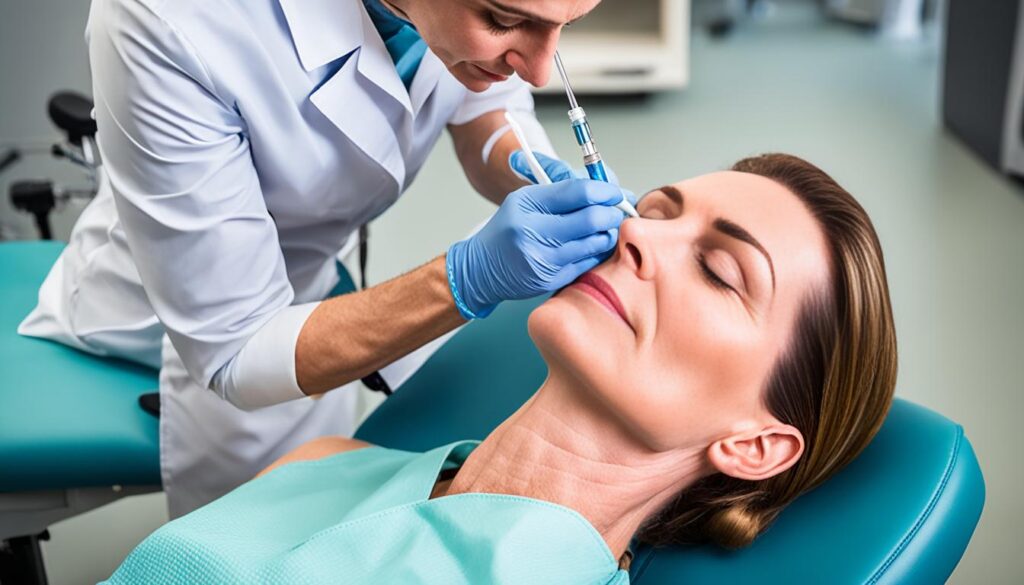If you or a loved one is struggling with dystonia cervical treatment, finding effective options to manage symptoms and improve quality of life is essential. Cervical dystonia, also known as spasmodic torticollis, is a condition that affects the neck muscles, causing abnormal neck posturing, tremor, and pain. Without proper treatment, it can significantly impact your daily life and well-being.
In this article, we will explore the most effective treatment options for dystonia cervical treatment and how they can help you manage symptoms and improve your quality of life. From botulinum toxin injections to oral medications and deep brain stimulation, there are treatment options available that can provide relief and restore functionality.
By understanding these treatment options and working closely with your healthcare provider, you can find a plan that suits your individual needs and preferences. With the right treatment, the symptoms of dystonia cervical can be effectively managed, allowing for improved functionality and a better quality of life.
Table of Contents
ToggleBotulinum Toxin Injections for Cervical Dystonia
Botulinum toxin injections, such as Botox, Dysport, Xeomin, and Myobloc, are the most effective and well-tolerated treatment for cervical dystonia. These injections provide targeted relief by selectively denervating and relaxing the affected neck muscles, leading to an improvement in the abnormal head posture and movements.
Patients with cervical dystonia often experience significant relief with botulinum toxin injections. The efficacy of these injections, along with their minimal side effects, makes them the preferred treatment option for cervical dystonia.
These injections are typically administered every three to four months and require repeat treatments to maintain their effectiveness. Regular follow-ups with a healthcare provider are necessary to monitor the progress and adjust the treatment plan as needed.

Botulinum toxin injections have revolutionized the management of cervical dystonia, offering patients a reliable method of achieving neck muscle relaxation and improving their overall quality of life. The targeted action of these injections provides significant relief, allowing individuals to regain control over their movements and reduce pain and discomfort.
In the next section, we will explore the role of oral medications as adjunct therapy for cervical dystonia, complementing the effects of botulinum toxin injections.
Oral Medications as Adjunct Therapy
While botulinum toxin injections are the primary treatment for dystonia cervical, oral medications can be used as adjunct therapy to enhance the effects or when injections are not practical or desired. These medications can complement the muscle-relaxing effects of botulinum toxin injections and provide additional relief for individuals with cervical dystonia.
Commonly used oral medications for dystonia cervical treatment include:
- Trihexyphenidyl
- Baclofen
- Tetrabenazine
Oral medications with a muscle-relaxing effect can help reduce muscle spasms and improve mobility in individuals with cervical dystonia. They are often prescribed as add-on therapy to enhance the effectiveness of botulinum toxin injections.
It is important to note that the effectiveness of oral medications may vary from person to person. Some individuals may experience significant relief from these medications, while others may have more modest improvements. Additionally, like any medication, oral medications may have potential side effects. It is important to discuss the potential risks and benefits with a healthcare provider before starting any oral medication regimen.
Overall, oral medications can be a valuable addition to the treatment plan for cervical dystonia, providing an extra layer of support and relief alongside botulinum toxin injections.

Adding a visual representation can help reinforce the message. The image above illustrates the different oral medications commonly used as adjunct therapy for dystonia cervical treatment.
Deep Brain Stimulation for Refractory Cases
In cases where botulinum toxin injections and oral medications fail to provide adequate relief, deep brain stimulation (DBS) can be considered as a surgical therapy option for cervical dystonia. DBS involves implanting a thin wire into the brain, connecting it to a neurostimulator device. Electrical pulses are then delivered through the wire, interrupting the nerve signals responsible for the abnormal head posture and movements. DBS is typically reserved for refractory cases that do not respond to other treatments. It is a complex and invasive procedure that requires careful evaluation and selection of appropriate candidates.
Deep brain stimulation is a promising treatment approach for individuals with cervical dystonia who have not achieved satisfactory results with other therapies. This surgical intervention targets the underlying neurological mechanisms contributing to the dystonic movements. By selectively modulating brain activity through electrical stimulation, DBS offers the potential for significant symptom improvement and enhanced quality of life.
Conclusion
Effective treatment options are available for managing cervical dystonia and improving the quality of life for those affected. If you are living with cervical dystonia, there are several strategies that can help alleviate your symptoms and allow you to regain control over your life.
Botulinum toxin injections, such as Botox, Dysport, Xeomin, and Myobloc, are the gold standard treatment for cervical dystonia. These injections selectively denervate and relax the affected neck muscles, providing significant relief from abnormal head posture and movements. Consult with your healthcare provider to determine if botulinum toxin injections are the right choice for you.
In addition to injections, oral medications can be used as adjunct therapy to enhance the effects of botulinum toxin injections. Medications with muscle-relaxing properties, like trihexyphenidyl, baclofen, and tetrabenazine, can complement the injections and further improve your symptoms. It is essential to work closely with your doctor to find the right combination and dosage of medications that suit your needs.
In rare cases where botulinum toxin injections and oral medications do not provide adequate relief, deep brain stimulation (DBS) may be considered as a surgical therapy option. This procedure involves implanting a wire into the brain and delivering electrical pulses to interrupt the nerve signals responsible for abnormal head movements. DBS should only be considered as a last resort for refractory cases, and careful evaluation is necessary to determine if you are a suitable candidate.
Remember, each person’s journey with cervical dystonia is unique, and the most effective treatment plan will depend on your individual needs and preferences. Consult with your healthcare provider to discuss these effective treatment options and find the best approach to manage your cervical dystonia. With proper treatment, you can regain functionality, improve your quality of life, and live your life to the fullest.
FAQ
What is cervical dystonia?
Cervical dystonia, also known as spasmodic torticollis, is a common adult-onset focal dystonia that affects the neck muscles, causing abnormal neck posturing, tremor, and pain.
What is the most effective treatment for cervical dystonia?
The most effective treatment option for cervical dystonia is botulinum toxin (BoNT) injections, which selectively denervate and relax the affected neck muscles.
What are botulinum toxin injections?
Botulinum toxin injections, such as Botox, Dysport, Xeomin, and Myobloc, are administered directly into the affected neck muscles to selectively denervate and relax them, resulting in an improvement in the abnormal head posture and movements.
How often do botulinum toxin injections need to be repeated?
Botulinum toxin injections typically need to be repeated every three to four months.
Can oral medications be used for cervical dystonia?
Yes, oral medications with a muscle-relaxing effect, such as trihexyphenidyl, baclofen, and tetrabenazine, can be prescribed as adjunct therapy to enhance the effects of botulinum toxin injections or when injections are not practical or desired.
What is deep brain stimulation?
Deep brain stimulation (DBS) is a surgical therapy option for cervical dystonia that involves implanting a thin wire into the brain, connecting it to a neurostimulator device. Electrical pulses are then delivered through the wire, interrupting the nerve signals responsible for the abnormal head posture and movements.
When is deep brain stimulation considered?
Deep brain stimulation is typically considered for refractory cases of cervical dystonia that do not respond to other treatments.
What should I do to manage my cervical dystonia?
It is important to consult with a healthcare provider to determine the most suitable treatment plan based on individual needs and preferences, which can help manage the symptoms of cervical dystonia and improve overall functionality and well-being.
Source Links
About The Author

This article is medically reviewed by Dr. Chandril Chugh, Board-Certified Neurologist, providing expert insights and reliable health information.
Dr. Chandril Chugh is a U.S.-trained neurologist with over a decade of experience. Known for his compassionate care, he specializes in treating neurological conditions such as migraines, epilepsy, and Parkinson’s disease. Dr. Chugh is highly regarded for his patient-centered approach and dedication to providing personalized care.
→ Book a consultation to discover which remedies suit your needs best.




